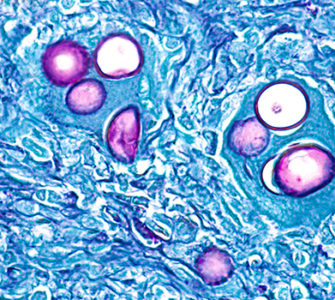‘Causal’ pie chart can help manage necrotic enteritis
Use of a simple “causal” pie chart is proving to be a helpful tool for controlling necrotic enteritis (NE), Joel L. Cline, DVM, a veterinarian with Wayne Farms, told Poultry Health Today.
Cline uses the causal pie as a visual to help poultry farmers and managers understand the many factors that can lead to NE. He has found that, in turn, managers have found the chart useful for educating their employees about NE.
He learned about the pie chart from a student riding with him, Cline noted. He thought she’d made it up, but when he went home and searched for it on the Internet, he found “it’s a real thing that epidemiologists use to describe and understand diseases that have many contributing factors.”
The first slice of pie Cline puts on an NE chart is Clostridium perfringens. “That’s the piece of the pie you have to have…and maybe when we pull the antibiotics, that piece gets larger. It fills in more of the pie because we don’t control that Clostridium as well or maybe it’s there, but we just don’t make it behave like we do with antibiotics,” he said.
Coccidiosis — an important piece of the pie
Coccidiosis is another important piece of the pie. “You can have necrotic enteritis without coccidia, but for us it’s usually there and it’s usually a contributing factor,” he continued.
There are many other factors that can contribute to NE ranging from vaccination programs to a flock’s immune status to litter management or how drinkers and feed ingredients are managed. Pieces of the pie may differ for different farms.
Cline acknowledged that not all contributing factors can be controlled, but he emphasizes managing those that can be moderated.
“We formulate our management processes for any issue we think might be contributing to necrotic enteritis. And then we put programs in place to manage each of those issues, and we go back and check to make sure we’re doing what we think we’re doing…” Cline said.
Making progress
Wayne Farms is now raising a significant portion of its flocks without antibiotics. Cline indicated that while it’s been challenging, “I think we’re making progress.” He also thinks that the experience has made him a better veterinarian.
Antibiotics were a “kind of crutch,” and with that taken away, the hatcheries are cleaner and there’s a better understanding of what’s going on in the intestines. “It’s given me a deeper knowledge, and I just think it’s helped me learn to pay attention to the details better,” he said.
Using coccidiosis as an example, Cline said, “If we’re vaccinating, it’s how we handle the vaccine. The right temperatures…how we apply the vaccine. It’s how [we manage] exposure in the field, turn-out times, things like that. Just managing those tightly. If we’re using coccidiostats…it’s how we apply those, how we rotate, making sure we have in the feed what we think we have in the feed and just managing all those small parts more closely.”
Posted on December 29, 2019

















